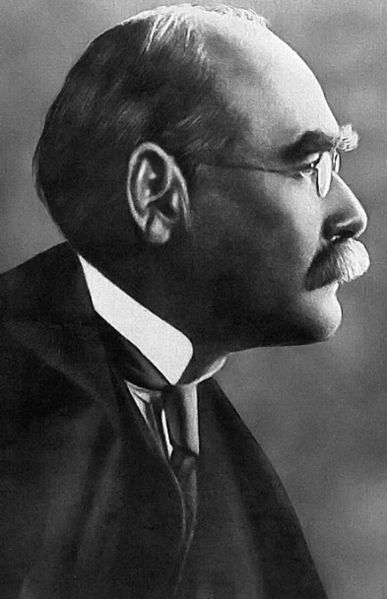Kanchanakesi Channa Warnapala: Dismantling the Gaze: Julia Margaret Cameron's Sri Lankan Photographs
abstract: Through an analysis of Julia margaret Cameron's Sri Lankan photographs, the author argues that not only are the monolithic constructions of the colonizer and colonized disrupted, but that the colonial gaze becomes multiple and contradictory, the white authorial gaze splintering in reference to colonial Ceylon, Ceylon emerging as a space of disruption, facilitating alternative representations of Victorian womanhood in the colonies.
 Rudyard Kipling - The Overland Mail (full text)
Rudyard Kipling - The Overland Mail (full text)1. Who are the characters of the poem? Discuss the role of the robber and the tiger.
2. What is the setting? What part of the day is the poem set in?
3. How is Indian landscape represented in the poem? Why? Is there any danger implied in the text? Does the country seem to be populated? Is the description of the country real or can it be perceived as a metaphor?
4. From whose perspective is the poem narrated?
5. What is the role of runner? How is he different from the robber? Why is he important for the exiles? Does he have a name?
6. Compare the ways the author refers to the exiles and the runner / jungle.
7. Is the hill where the exiles reside symbolic? Explain. Is there any difference between the valley and the hillside where the exiles live?
8. What contrasts / oppositions is the poem based on?
9. Is the journey the runner has to undertake symbolical? If yes, why?
10. How is the power of the Empire over the runner exemplified in the text?
Chimamanda Ngozi Adichie - Jumping Monkey Hill
1. Briefly summarize the plot of the story.
2. Who are the main characters? Characterize them.
3. Comment on the setting of the workshop. How authentic is it?
4. What role does Edward play in the story? How is he described? Find references to Ujunwa's attitude to him.
5. Comment on Edward's vision of Africa and African literature. Try to brainstorm a list of expressions that would best sum up his opinion.
6. How does Ujunwa's relationship to Edward evolve?
7. To what extent are Edward's actions symbolic?
8. Comment on the structure of the story. How do the snippets of Ujunwa's story change the pace of the narrative? What is their function?
9. What kind of Africa is depicted in Ujunwa's story and the stories of other workshop participants? Find Edward's responses to them in the text.
10. How do the Africans communicate with one another? And with Edward?
11. What is the prevalent tone of the narrative?4. What role does Edward play in the story? How is he described? Find references to Ujunwa's attitude to him.
5. Comment on Edward's vision of Africa and African literature. Try to brainstorm a list of expressions that would best sum up his opinion.
6. How does Ujunwa's relationship to Edward evolve?
7. To what extent are Edward's actions symbolic?
8. Comment on the structure of the story. How do the snippets of Ujunwa's story change the pace of the narrative? What is their function?
9. What kind of Africa is depicted in Ujunwa's story and the stories of other workshop participants? Find Edward's responses to them in the text.
10. How do the Africans communicate with one another? And with Edward?
12. Sum up the main subject matters of the story and formulate the theme(s).
Gurpreet Kaur Bhatti - Behzti (Dishonour)
1. Briefly summarize the plot of the play.
2. Who are the main characters? Describe them. What is the relationship betweem Balbir and her daughter Min like at the beginning and at the end of the play? What does the play suggest about (religious) authorities?
3. Analyse the setting of the play. What role does the gurdwara play in Sikhism?
4. What is the major conflict of the play?
5. How is the Sikh community portrayed in the play?
4. What is the major conflict of the play?
5. How is the Sikh community portrayed in the play?
6. Comment on the subject matters of the play. Are there any "unspeakable" or "unpresentable" images/issues? Can these themes be apllied outside the religious context?
7. Why did the play, in your opinion, cause such a controversy? Do you agree with its closure?
Film: Fights of Nations (1907)
From Biograph bulletin no. 94: Our latest production, under six titles, represents various types and nationalities, with tragedy and comedy intermingled. Every scene is beautifully staged, and each nationality well represented.
Video: Chimamanda Ngozi Adichie on cultural stereotypes and the significance of literary representation
Video: Bert Williams performing
Link: read Caryl Phillips' novel Dancing in the Dark (2005)
Video: Edward Said on Orientalism